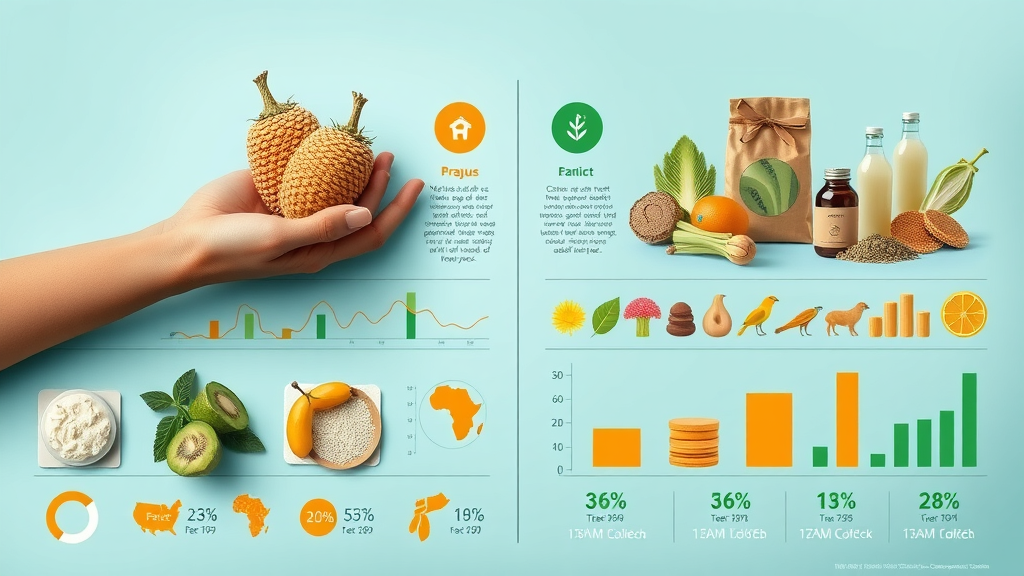Only 12% of women entrepreneurs actively integrate sustainable success systems into their businesses—yet those who do are twice as likely to experience long-lasting achievement and improved well-being. Unlocking sustainable success isn’t just a trend—it’s a necessity for women who want to thrive without burning out , stand out from everyone else, and set a new standard for women in leadership. This in-depth guide will reveal exactly why and how you can build a system that empowers women lead to create legacies, not just businesses.

The State of Sustainable Success Systems for Women: Surprising Statistics and Why They Matter
- Did you know only 12% of women entrepreneurs implement sustainable success systems? Learn how this impacts business success and well-being.
In today’s business environment , sustainable success for women is more than a buzzword—it's a blueprint for genuine, long-term leadership. Despite growing awareness of inclusivity and systemic change, many of us feel like we’re still playing catch-up with evolving leadership styles and wellness trends. The low percentage of women integrating sustainable systems—just 12%—signals a pressing need: women in business must step outside conventional models and rethink how they define and measure business success .
These systems don't just influence the bottom line ; they impact mental health, work-life balance, and productivity. Women leaders who embed sustainable practices are not only outperforming their peers, but they’re also crafting healthier companies and communities. This statistical gap is a call to action: the journey toward sustainable success systems for women is about laying the groundwork for a sustainable future —literally and metaphorically.
Defining Sustainable Success Systems for Women: Core Components and Unique Challenges
What Sets Sustainable Success Systems for Women Apart?
Sustainable success systems for women differ fundamentally from traditional metrics of achievement. Instead of prioritising relentless hustle, these frameworks put nervous system regulation , adaptability, and holistic well-being at the core. Women in leadership often balance unique pressures: societal expectations, invisible labour, and a chronic lack of tailored mentorship. These challenges mean that sustainable frameworks must harmonise with women’s lived realities, offering room for diverse leadership styles and unique perspectives .
Unlike one-size-fits-all solutions, a sustainable approach recognises that women in business need support structures flexible enough to adapt to fluctuating demands, personal needs, and business cycles. Existing power hierarchies are evolving, and women leaders are pioneering new systems that blend business acumen with emotional intelligence and community-focused growth. In the first place, these differences set the stage for rewriting definitions of success for current and future generations.

Key Elements of Sustainable Success in Women's Professional and Personal Lives
True sustainable success for women requires robust systems that support both professional ambition and personal health. Key elements include: aligning mission-driven objectives with sustainable business practices, prioritising nervous system health, and fostering a strong network for mentorship and collaboration. For many women leaders, integrating rest, reflection, and renewal is crucial to maintain a thriving career and holistic wellness.
These elements go beyond profitability—they also emphasise flexibility, inclusive leadership styles, and a willingness to innovate. By incorporating mindfulness practices, structured routines, and accountability partnerships, women in leadership unlock scalable, repeatable pathways to achievement. As one leader notes:
"When women lead with systems designed for long-term wellness, everyone benefits."
Why Women Need Sustainable Success Systems in Today’s World
Closing the Gap: Gender, Nervous System Regulation, and Sustainable Business
Traditional business models often overlook the key role of nervous system regulation in sustainable success—particularly for women. Chronic stress and overwork are not badges of honour, but red flags that undermine creativity and momentum. In contrast, women who incorporate nervous system support in their success systems enjoy improved decision-making, resilience, and a consistent edge in business growth without burning out.
The gender gap persists not only in pay or positions but also in the invisible emotional labour women take on. Addressing these disparities means moving beyond superficial equality to foster real systemic change—one that enables women lead to thrive rather than just survive in leadership positions. By infusing nervous system regulation tools into business practice, women set themselves up for sustained, empowered achievement.
Breaking the Cycle: Burnout vs. True Business Success for Women
Many women in leadership find themselves caught in a vicious cycle—pushing harder only to fall prey to burnout. Sustainable success systems disrupt this pattern by injecting mindful pauses, regular wellness checks, and built-in support into daily routines. This approach helps leaders stay up to date on both business targets and personal health goals, creating a self-sustaining feedback loop for continuous growth.
In the past, relentless output was championed as the route to the top. Today, we know it’s also about creating space for rest, creativity, and recharging—core drivers of long-term success for business owners. True business success is measured by how well leaders can balance ambition with well-being, ensuring that achievements aren’t just impressive, but sustainable.
- Advantages of a Sustainable Approach to Women's Success:
- Reduced risk of burnout and increased resilience
- Greater innovation and creativity
- Work-life harmony and higher retention rates
- Legacy-building for women in leadership
Critical Components of Sustainable Success Systems for Women
Aligning Nervous System Health with Business Success
Sustainable success systems for women must be rooted in well-regulated nervous systems. The constant stress of scaling a sustainable business, managing team dynamics, and content creation for social media can take its toll on even the most resilient leaders. By prioritising nervous system balance—through breathwork, mindfulness, and intentional breaks—women can maintain peak performance without sacrificing health.
The synergy between nervous system health and business success isn't theoretical; it's science-based. A calm, well-regulated nervous system amplifies focus, deepens problem-solving skills, and fosters healthy engagement with colleagues and clients. Business owners who implement these practices report clearer thinking, less reactivity, and a greater capacity to lead during uncertainty.

Personal Productivity Meets Sustainable Business Practices
Personal productivity alone is not enough. Sustainable success integrates schedule optimisation with energy management—tying business performance directly to holistic well-being. By embedding downtime, physical activity, and reflective check-ins into daily routines, women leaders reinforce the foundation of their sustainable business while boosting their unique leadership style.
Improved personal productivity doesn't mean doing more; it means doing what matters most, efficiently, and with grace. Adopting these sustainable systems empowers women to set boundaries, foster innovation, and align their work with their core values. As a seasoned leader observed:
“You cannot pour from an empty cup—sustainable success means thriving in every area, including your nervous system health.”
Building a Sustainable Business: Frameworks Tailored for Women
Structuring Your Day for Sustainable Success
The structure of your day can make—or break—your sustainable business goals. Women lead most effectively when their schedules allow for both deep work and conscious rest. Start by mapping out key business tasks alongside wellness activities, ensuring each gets dedicated focus and doesn't compete for attention.
For example, schedule content creation for your business environment during your peak focus hours and reserve midday for movement, networking, or personal reflection. This approach enables women in business to tune into their energetic highs and lows, creating momentum without burning out. Over time, this method redefines leadership positions from reactive firefighting to proactive, empowered decision-making.
Time-Bound Goals and Flexible Routines for Women Who Lead
Women in leadership thrive with a hybrid model—committing to specific, measurable outcomes while maintaining flexibility to adapt as life evolves. Setting time-bound goals boosts accountability, but equally important is building in “white space” for unexpected opportunities or challenges. Flexible routines empower women to experiment, reflect, and refine without fear of stepping outside the norm.
Whether your next move is expanding your business, pursuing new technologies, or developing unique perspectives for your leadership style, keeping plans agile ensures you stay up to date and motivated. This approach is crucial for women leaders committed to a sustainable future that honours both personal and professional growth.
- Steps to Implement Your Own Sustainable Success System:
- Assess your current time usage and identify energy peaks and valleys.
- Create blocks for focused work, wellness, connection, and play.
- Set clear, achievable objectives that align with your vision.
- Build community support and accountability into your strategy.
- Continuously reflect, revise, and celebrate progress.
| Time Block | Task | Wellness Practice | Business Objective |
|---|---|---|---|
| 7–8 am | Morning intention & planning | 15-min breathwork | Review key priorities |
| 8:30–11 am | Focused content creation | Mid-morning stretch break | Complete 1 business milestone |
| 12–1 pm | Networking or team call | Healthy lunch + walk | Strengthen strong network |
| 2–4 pm | Administrative tasks & review | 5-min meditation | Stay up to date on objectives |
| 5–6 pm | Personal reflection & visioning | Gratitude journaling | Refine next move |

Nervous System Regulation: Foundation of Sustainable Success Systems for Women
How Stress Impacts Long-Term Achievement for Women
Chronic stress has a cascading effect—impacting decision quality, innovation, and emotional resilience. For women in leadership, this can erode confidence and slow business growth. Left unchecked, stress sabotages both work performance and personal well-being, keeping talented women business owners from reaching their full sustainable success potential.
Recognising the early signs of stress—fatigue, lack of focus, irritability—allows leaders to course-correct in real time. Integrating nervous system regulation strategies helps prevent burnout, rebuild resilience, and empower women lead to step outside stress cycles and into lasting achievement.
Science-Backed Methods for Nervous System Balance in Business Settings
There’s a robust body of science behind the connection between the nervous system and sustainable business performance. Practices like mindful breathing, yoga, nature walks, and rest help regulate the body’s stress response, promoting clarity and sustainable energy across high-pressure business environments. Women leaders who integrate these tools report higher satisfaction and creative problem-solving abilities.
These science-backed methods are more than wellness fads—they’re foundational tactics for thriving without burning out. When implemented regularly, they reinforce a healthier, more productive leadership style and cultivate success that sticks for the long haul.
- Practical Techniques: Breathwork, Mindfulness, and Rest:
- Start and end each day with calming breath practices.
- Schedule 2-3 mindful pauses throughout your workday.
- Prioritise quality sleep for recovery and mental clarity.
Women Lead: Real-life Stories of Sustainable Success
Case Study: From Burnout to Flourishing Female Entrepreneur
Meet Maya, a once-overwhelmed entrepreneur, who felt like burnout was inevitable in her fast-paced industry. After integrating sustainable success systems —including nervous system regulation, time-blocking for wellness, and strong community support—she not only doubled her revenue but also rekindled her passion for leadership. Maya’s story is proof that sustainable business doesn’t require sacrificing self for success.
With step-by-step guidance, Maya shifted her leadership style to focus on self-care, flexibility, and long-term planning. Today she empowers other women in business to create sustainable futures where they feel energised, not depleted. Her journey reveals how aligned systems unlock new possibilities—for women leaders, their teams, and their communities.

Lessons from Women Who Built Sustainable Businesses
Across industries, countless women leaders are making a profound impact by developing their own sustainable success systems. From solo content creation entrepreneurs to CEOs of dynamic companies, the common theme is clear: sustainable results start with internal wellness and extend to business innovation. These leaders are reshaping the narrative, demonstrating that the sustainable future of business is inclusive, adaptive, and wellness-driven.
Their leadership styles vary—from detail-oriented planners to visionary coaches—but they all centre their nervous system health as the engine behind their achievement. As one powerful testimony illustrates:
“My nervous system is the engine of my business—without taking care of it, success just isn’t possible.”
Measuring Success: KPIs and Metrics for Sustainable Success Systems for Women
| KPI | Quantitative Example | Qualitative Example |
|---|---|---|
| Well-being Index | % of days with high energy | Leader’s felt sense of work-life balance |
| Business Flexibility | Number of schedule adaptations/month | Reported adaptability to change |
| Profitability | Net business growth/quarter | Sense of purpose and alignment |
| Network Strength | Number of meaningful collaborations | Quality of mentorship relationships |
| Stress Recovery Time | Average recovery after setbacks | Leader’s confidence in stress management |
Balancing Quantitative and Qualitative Measures of Women's Success
Women in leadership benefit most from a holistic approach to measurement, blending hard numbers with “soft” success indicators. While profitability is critical, so too is the felt experience of work satisfaction, purpose, and adaptability. By tracking both, women create feedback loops that support continuous improvement and well-being.
Incorporating ever-evolving KPIs not only validates achievements but reveals new areas for growth. This balanced system recognises the inherent value of well-being, flexibility, and collaboration—key pillars of sustainable success systems for women and women in business at every stage.
Continuous Improvement: Evolving Your Sustainable Success System Over Time

Staying Current: Adapting to Changes in Business and Personal Life
The most effective sustainable success systems are not static—they grow alongside both the woman and her business. Staying current in a dynamic world means revisiting your routines, tracking new technologies, and adjusting expectations as life and work evolve. To step outside rigid plans and embrace adaptation is a mark of true leadership.
Continuous learning, openness to feedback, and regularly auditing your success metrics keep you ahead of the curve. Women lead powerfully when their systems welcome change, fostering long-term sustainability in a shifting business landscape.
Seeking Mentorship and Community for Ongoing Sustainable Success
A strong network and meaningful mentorship provide a lifeline for sustainable business owners. Whether it’s seeking advice from more experienced women leaders or joining women-focused mastermind circles, this shared wisdom accelerates progress and provides emotional support during transitions. Many of us thrive best surrounded by community and collaboration, not competition.
When women in leadership cultivate relationships and give back, they not only shore up their own sustainable success systems—but inspire the next generation to do the same. Collective progress is at the heart of every systemic change in how women lead and flourish.
Common Obstacles in Implementing Sustainable Success Systems for Women
Overcoming Societal Expectations and Internal Barriers
Societal conditioning and internalised beliefs often hold women back from embracing sustainable business models. The expectation to “do it all,” the fear of not measuring up to everyone else, and limited access to resources contribute to self-doubt and inertia. Overcoming these barriers starts with consciously challenging old narratives and giving oneself permission to lead differently.
Success also means embracing vulnerability: asking for help, prioritising rest, and accepting that sustainable growth requires ongoing recalibration. Women leaders who now excel once struggled with the same doubts—it’s courage and consistency that make a difference.
- Solutions to the Most Frequent Challenges Women Face:
- Practise self-compassion and release perfectionism
- Join communities or mentorships to build confidence
- Redefine success as a spectrum, not a static destination
- Set boundaries with work and social media
- Integrate regular wellness routines in business plans
People Also Ask: Sustainable Success Systems for Women
What are examples of sustainable success systems for women?
- Examples include time-blocking with wellness breaks, business models centring flexibility, and integrating self-care in daily leadership routines.
How can women maintain work-life balance with sustainable business practices?
- By setting clear boundaries, using nervous system regulation tools, and prioritising both business and well-being in daily plans.
Why is nervous system health integral to women’s business success?
- Because chronic stress and dysregulation undermine decision-making, creativity, and resilience—key factors for sustained business success.
What resources help women establish sustainable success systems?
- Resources include female-focused business coaching, nervous system support groups, and productivity frameworks designed for women.
Frequently Asked Questions About Sustainable Success Systems for Women
- Can sustainable success systems for women work for all industries?
- How long does it take to implement a sustainable business framework for women?
- What’s the best way to track progress in sustainable success systems for women?
- How do women lead differently when prioritizing sustainability?
Strategies for Immediate Action: Start Building Your Sustainable Success System Today
- Audit your current business practices for sustainability and nervous system impact
- Set 1–2 new sustainable goals for the upcoming week
- Join a supportive network where women lead with sustainable business systems
Watch an expert interview explaining the neuroscience of stress, nervous system regulation, and actionable wellness tips for women business leaders. Visuals explore women in leadership roles and scientific depictions of the nervous system.
Discover real-world, actionable insights from women who’ve built genuinely sustainable businesses—balancing business success with personal well-being and bold leadership.
Get a guided walk-through on setting up your own sustainable success system: audits, goal-setting, weaving in wellness practices, and connecting to community, all tailored for women in business.
Key Insights for Unlocking Sustainable Success Systems for Women
- Nervous system health is the cornerstone of sustainable success for women
- Sustainable business models are essential for work-life balance and business longevity
- Women benefit from community, mentorship, and adaptive planning in their success systems
Ready for Sustainable Success Systems for Women? Begin Your Transformation
- Discover The She E-Boss Diaspora Carousel Chronicles News https://sheebosssolutionist.com/chronicles for more tools and stories to fuel your journey in sustainable success systems for women.
Conclusion
Embrace sustainable success systems for women by prioritising nervous system health, flexible routines, and strong networks. Start small—today—and pave the way for lasting achievement, impact, and a new legacy for women in leadership.
Sources
- https://sheebosssolutionist.com/chronicles
- https://hbr.org/2022/05/harnessing-the-power-of-female-business-leadership
- https://www.mckinsey.com/featured-insights/diversity-and-inclusion/women-in-the-workplace
To deepen your understanding of sustainable success systems for women, consider exploring the following resources:
-
“4 Tips For Building A Sustainable Business As A Female Entrepreneur” : This article offers practical advice on defining your business purpose, leveraging creative financing strategies, and embracing continuous learning to build a sustainable business. ( forbes.com )
-
“Eco-Conscious Leadership: How Women Lead the Forefront of Sustainable Business Practices” : This piece highlights how women leaders are adopting holistic approaches, championing circular economy principles, and fostering cultures of sustainability within their organizations. ( workforceinstitute.io )
These resources provide valuable insights into building sustainable success systems tailored for women entrepreneurs.
 Add Row
Add Row  Add
Add 




Write A Comment